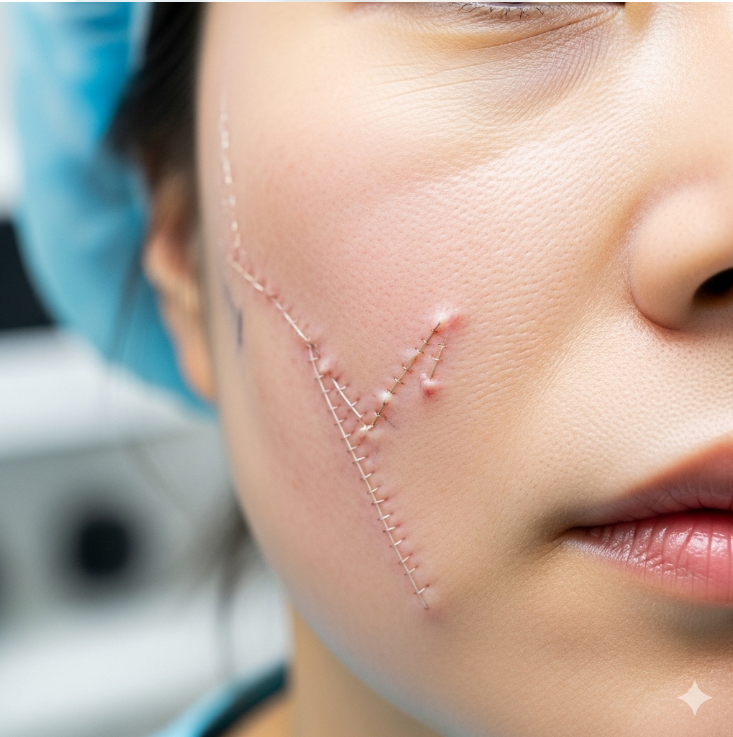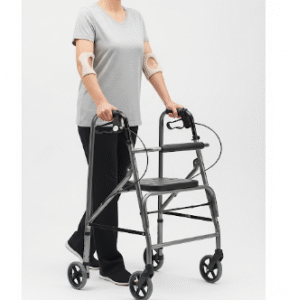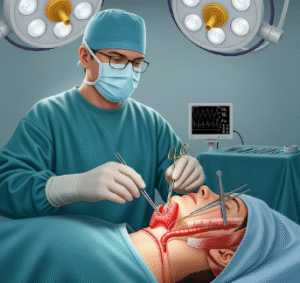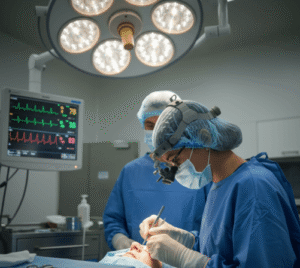What It Is
W-plasty scar revision is a surgical technique used to improve the appearance of scars. Instead of a straight-line scar, the surgeon excises and re-closes the scar in a zigzag (W-shaped) pattern. This approach helps break up the line of the scar, making it less visible, especially in areas where scars may stand out against natural skin lines.
In Korea, W-plasty is performed in specialized plastic surgery and dermatologic surgery centers. Surgeons use fine suturing techniques and advanced wound management strategies to optimize cosmetic outcomes for international and local patients alike.
Why It’s Done
Patients may undergo W-plasty scar revision for several reasons:
- To make long, linear scars less noticeable.
- To improve scars that healed poorly after injury, burns, or previous surgery.
- To blend scars with the skin’s natural creases or wrinkles.
- To reduce tension across scars, lowering the risk of scar widening or recurrence.
- To improve self-confidence, particularly when scars are located on visible areas such as the face, neck, or hands.
Alternatives
Depending on scar type and severity, alternatives to W-plasty include:
- Z-plasty: Another surgical technique that reorients scars and improves skin tension.
- Laser therapy: Smooths scar texture and reduces redness or pigmentation.
- Steroid injections: Help flatten thick or raised scars (hypertrophic scars or keloids).
- Dermabrasion or microneedling: Improve surface irregularities.
- Topical treatments: Silicone gels or sheets to improve scar softness and color.
Preparation
Preparation for W-plasty scar revision usually includes:
- Consultation: Assessment of scar type, location, and skin characteristics.
- Medical history: Reviewing past injuries, healing patterns, and any tendency toward keloid formation.
- Lifestyle adjustments: Stopping smoking and avoiding alcohol 2–4 weeks before surgery to enhance healing.
- Medication review: Discontinuing blood thinners or certain supplements if required.
- Post-surgery planning: Arranging for aftercare and follow-up visits.
How It’s Done
W-plasty is typically performed under local anesthesia with sedation for small scars, or general anesthesia for larger or multiple scars. The steps include:
- Scar marking: The surgeon designs a W-shaped incision pattern along the scar.
- Excision: The old scar tissue is carefully removed following the zigzag outline.
- Re-closure: The skin is sutured in the W-pattern, redistributing tension and breaking up the straight scar line.
- Dressing: A protective dressing is applied to promote proper healing.
The procedure usually takes 1–2 hours, depending on the scar’s size and complexity.
Recovery
Recovery after W-plasty scar revision is relatively quick:
- First week: Mild swelling, bruising, and redness are common. Stitches are usually removed within 5–7 days.
- Healing period: Patients should avoid strenuous activities and protect the scar from sun exposure.
- Scar maturation: The scar gradually fades and blends into the surrounding skin over several months.
- Follow-up care: May include silicone sheets, laser treatments, or injections for optimal results.
Possible Complications
Although generally safe, W-plasty scar revision carries some risks:
- Infection or bleeding.
- Delayed wound healing.
- Scar widening or recurrence.
- Asymmetry if the zigzag pattern does not heal evenly.
- Temporary numbness or changes in skin sensation.
- Rare hypertrophic or keloid formation in predisposed patients.
Treatment Options in Korea
Diagnosis
- Detailed consultation with a plastic or dermatologic surgeon.
- Assessment of scar size, depth, and skin type.
Medical Treatments
- Pain relief and antibiotics as needed.
- Topical scar care products to improve healing.
Surgical or Advanced Therapies
- W-plasty scar revision: Standard procedure for long, linear scars.
- Z-plasty or geometric broken-line closure: Alternatives for certain scar types.
- Laser therapy and microneedling: Often combined with W-plasty for enhanced outcomes.
Rehabilitation and Support
- Post-surgery scar management (silicone gels, massage, or laser therapy).
- Long-term follow-up to monitor scar healing and appearance.
- International patient support including interpreters, hospital coordination, and virtual consultations.













